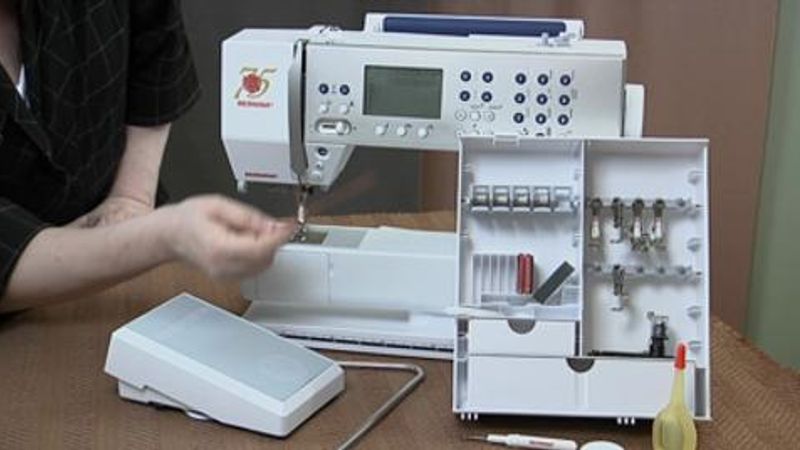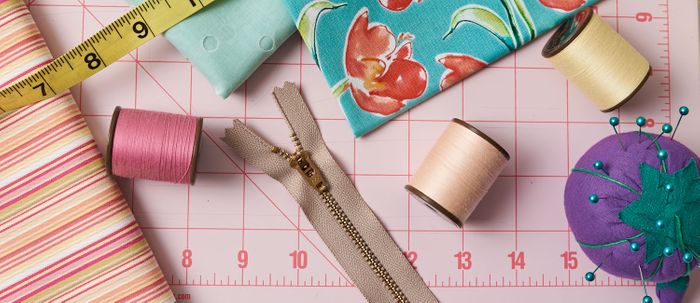
Learn what equipment you need to begin sewing garments. You’ll discover the essential tools to buy, including a sewing machines, an iron and pressing tools, and pins and scissors.
Judith Neukam, a Threads contributing editor, describes the features available on entry-level vs. more expensive machines. She advises buying the best machine you can afford. Learn whether a serger is for you, now or in the future.
Every sewer, even a beginner, needs an iron that produces a good amount of steam. Also equip yourself with a pressing hem. If you like, invest in a tailor’s board and a sleeve board, too.
Teach Yourself to Sew
Garment sewing expert Judith Neukam got her first taste of sewing when she took the free lessons that came with her mother’s sewing machine purchase. Judith was 9 at the time. Soon after, she was sewing her own clothes and feeding her passion for the craft. In her Teach Yourself to Sew series, Judith shares her enduring love of sewing and her invaluable years of sewing experience.
Getting started
She starts with discussing the equipment and the essential sewing notions for anyone who sews. You’ll learn about shopping for fabrics, choosing patterns (including selecting the correct size), and planning the perfect pattern layout. From machine-sewing simple seams to inserting zippers and stitching buttonholes, Judith demonstrates the key steps to making a custom garment.
Discover methods for clean-finishing seam allowances and applying facings so all edges are neat. To add shape to garments, Judith explains how and why to sew darts, and how to gather fabric for volume. Other garment elements, such as sleeves, pockets, and elasticized waistbands, are shown in easy-to-follow video tutorials.
Advancing your skills
When you’re ready to challenge yourself further, tune in to Judith’s overview of couture garments and sewing techniques. Even if you never intend to become the next Coco Chanel, you’ll learn methods that add quality to your everyday wardrobe. Find out how to perfectly match stripes, plaids, and prints; baste seams; and insert underlinings and linings.
Finally, Judith shares the basics of pattern fitting and adjustment. Her method begins at the shoulders, ensuring the garment hangs properly. Follow along as Judith shows how to create a shoulder template that you can use again and again to adjust patterns before cutting the fabric. As a bonus, you’ll even learn how to create a custom dress form so you can fit garments on a body that truly represents your true body shape.






I have that Baby Lock BL3-408 serger! Sure, it might be a little more difficult to thread, but those old solid metal sergers were beasts and can sew through anything with very little maintenance required - and NEVER once a repair in 35 years. (Ditto vintage mechanical sewing machines.)